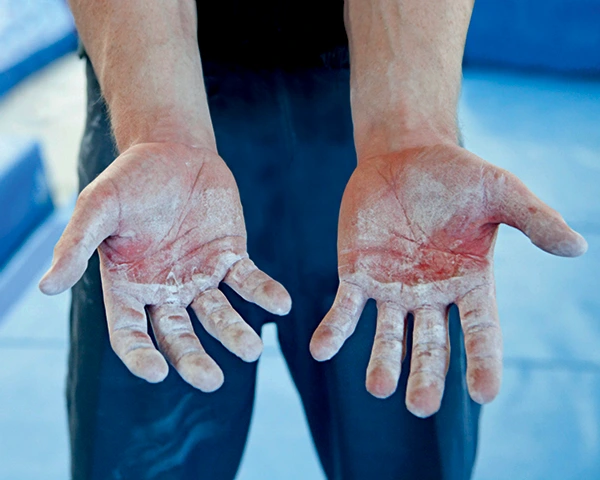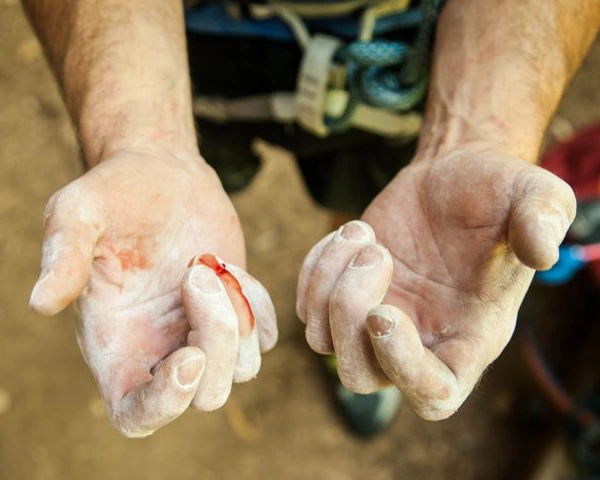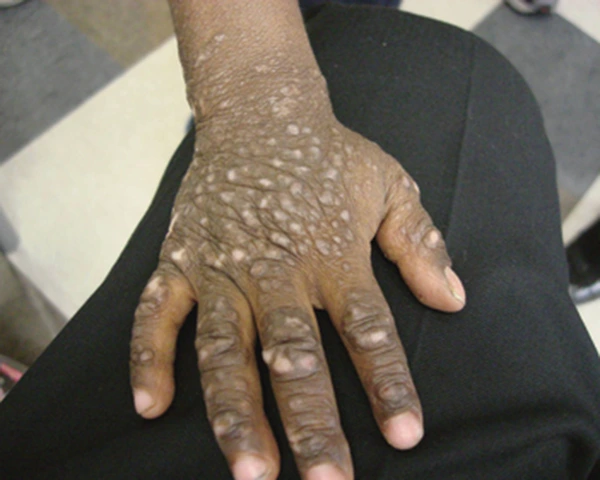MAKE BIG WIPES PART OF YOUR HEALTH & SAFETY STRATEGY
Big Wipes cleaning wipes help to solve a health and safety issue for tradespeople. Dermatitis, especially Contact Dermatitis, and Allergic Contact Dermatitis can cause a lot of damage to a tradeperson’s hands. Speedy removal of irritants is essential as skin disease on the hands can be debilitating and has serious implications when trying to continue with work.
CONTACT DERMATITIS AND ALLERGIC CONTACT DERMATITIS
Work-related skin disease can vary widely in severity from serious cases of contact dermatitis, to minor skin irritation. According to the latest Health and Safety Executive (HSE) figures (2016) available, there are between 12 000 and 20 000 people suffering from work-related skin diseases. Further, around 7,000 new cases of skin problems diagnosed every year.
Exposure takes its toll and can leave sufferers in crippling pain – and millions of pounds are lost each year in sick days.

WHAT IS CONTACT DERMATITIS?
Contact Dermatitis is an inflammation of the skin that results from contact of an external substance with the skin. There are two main forms of the disease.
Irritant contact dermatitis (ICD) includes a range of abnormal skin changes due to cell damage by various irritants. Allergic contact dermatitis (ACD) occurs as an immunological response to an allergen.
Dermatitis most commonly affects the hands. The severity of the condition is influenced by:
- duration of exposure
- regularity of contact
- strength of the concentration of the substance

HOW CAN I GET CONTACT DERMATITIS?
Some substances damage skin, while others pass through it and damage other parts of the body. Skin gets contaminated by:
- direct contact with the substance, e.g if you touch it or dip your hands in it
- splashing
- substances landing on the skin, e.g airborne dust
- contact with contaminated surfaces – this includes contact with contamination inside protective gloves.
If your skin is in contact with an irritant (e.g. harsh and abrasive substances, solvents, detergents, wet cement, petrol, degreasers, descalers, dust, soil), the top layer of protective skin can be removed, as well as stripping the skin off its natural oils. Almost all workers in wet-work industries, such as cleaning, engineering, building-site work, etc. develop some degree of irritant contact dermatitis. Contact with contaminated tools or surfaces can also lead to harmful substances landing on the skin, causing a problem.

WHAT ARE THE SYMPTOMS OF CONTACT DERMATITIS?
Dryness, redness, soreness, burning and itchiness of the skin are usually the first symptoms. These can deteriorate into a debilitating and painful condition if not treated. Blisters, swelling, flaking and cracking of the skin could be the next stage of dermatitis. The symptoms only occur on areas of the skin exposed to the irritant.
WHAT CAN I DO TO TREAT CONTACT DERMATITIS?
Moisturisers, emollients, topical steroids and in some cases, antibiotics, may be suggested by your doctor or chemist to help clear symptoms. Even when the skin appears to be healed, its protective capacity could remain impaired for weeks.
WHAT CAN I DO TO PREVENT CONTACT DERMATITIS?
The HSE advises workers to use the ‘APC’ approach when it comes to looking after your hands, which stands for Avoid, Protect and Check.
AVOID
Logically, you should avoid direct contact between unprotected hands and substances, products and wet work where this is sensible and practical. However, when you’re a busy tradesperson, avoiding contact with filth can be impossible.
Washing your hands is the most obvious way of getting rid of potentially harmful substances. However, when you’re off site, water access can be miles away. Even when water and soap are available, and as most tradespeople know only too well, there’s plenty of muck that just doesn’t come off with soap and water. Moreover and most importantly, soap and liquid cleaners have consistently been the most commonly recorded causes of contact dermatitis.
PROTECT
If avoiding the causative substance is not possible, then prompt and thorough cleaning of the skin after coming into contact with potential irritants is crucial in the prevention of dermatitis.
For some trades, gloves might be the answer. However, they are simply not suitable for many types of jobs. Above all, for a large number of individuals, the gloves themselves can cause problems. Uriticaria (hives) can be a reaction to certain gloves and can cause an almost immediate raised and itchy rash that can also cause tingling and burning. Gloves have also been accused of making the wearer’s hands too warm or sweaty, which could lead to discomfort or distress.
CHECK
Continuously check your hands for the first signs of red, dry or itchy skin.

THE BIG WIPES SOLUTION FOR CONTACT DERMATITIS
 Big Wipes cleaning wipes are the safest and most practical solution for removing construction chemicals and maintenance products. These industrial strength wipes contain a blend of cosmetic grade solvents to effectively remove the grime. They also contain four skin conditioners that can offer a comprehensive level of protection in one convenient package. Big Wipes are used without water and are fully portable and therefore perfect for on-site use.<
Big Wipes cleaning wipes are the safest and most practical solution for removing construction chemicals and maintenance products. These industrial strength wipes contain a blend of cosmetic grade solvents to effectively remove the grime. They also contain four skin conditioners that can offer a comprehensive level of protection in one convenient package. Big Wipes are used without water and are fully portable and therefore perfect for on-site use.<
>Big Wipes can be thrown in the bin as soon as they have been used. This greatly reduces the chance of contamination and the spread of dermatitis, which is often the case with shared tubs of hand cleaning gel.
ALLERGIC CONTACT DERMATITIS
Allergic contact dermatitis occurs when your skin comes in direct contact with an allergen. For instance, if you have a nickel allergy and your skin comes in contact with jewellery made with even a very small amount of nickel, you may develop red, bumpy, scaly, itchy or swollen skin at the point of contact.
A recent recommendation was made in the interests of consumer health and in response to clinical data, which shows an increase in adverse skin reactions to Methylisothiazolinone (MIT or MI). This chemical is used in many cosmetic and personal care products, such as baby wipes. Working closely with the European Society for Contact Dermatitis, the European personal care association, Cosmetics Europe, issued an industry-wide recommendation to discontinue the use of the preservative MIT in personal care products.
THE BIG WIPES SOLUTION FOR ALLERGIC CONTACT DERMATITIS
Big Wipes anticipated these recommendations many years ago. Our formulation is preservative free and is mainly water-based, containing no harmful chemicals and less than 0.5% alcohol.
In addition to four powerful cleaning agents, Big Wipes contain four dermatologically tested skin conditioners: Aloe Vera, Lanolin, Vitamin E and Glycerine ‐ all helping to nourish and protect the skin.
The Big Wipes 4×4 range has been assessed to the latest EU Regulation 1223/2009 for cosmetic products with zero levels of irritation recorded during controlled testing by dermatologists. Read more about our compliance here.

